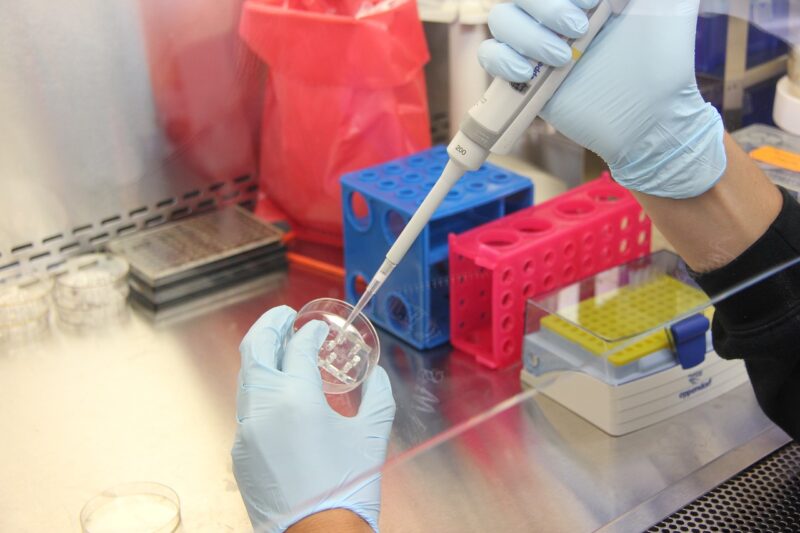The Role of Science in Solving Today’s Biggest Environmental Challenges
November 11, 2024

As the world confronts pressing environmental challenges such as climate change, pollution, deforestation, and the loss of biodiversity, the role of science in devising solutions to these issues has never been more crucial. Scientific research and technological advances are essential for understanding the complexities of our ecosystems and developing innovations that can mitigate damage and promote sustainability.
1. Understanding Environmental Challenges Through Science
To tackle the myriad of environmental challenges, one must first grasp their underlying causes and implications. Science plays a pivotal role in identifying these issues through rigorous research and data analysis. Major environmental challenges include but are not limited to:
- Climate Change: The Earth’s climate is changing due to the accumulation of greenhouse gases in the atmosphere, resulting in extreme weather patterns, rising sea levels, and loss of biodiversity.
- Pollution: Chemical, plastic, and noise pollution are disrupting ecosystems and harming human health. Scientific studies reveal the sources and effects of these pollutants.
- Deforestation: Forests are being cleared for agriculture, urban development, and logging, leading to habitat loss and increased carbon emissions.
- Loss of Biodiversity: Human activities are causing species extinction at an unprecedented rate, threatening the balance of ecosystems.
Understanding these complex issues enables scientists to develop strategies to address them effectively.
2. Innovative Scientific Solutions
Science provides a foundation for innovative solutions across various fields, including biology, chemistry, environmental science, and engineering. Here are some notable scientific approaches:
- Renewable Energy Technologies: Innovations in wind, solar, and hydroelectric energy are reducing reliance on fossil fuels, which are a significant contributor to climate change. For instance, solar photovoltaic technology harnesses sunlight efficiently, enabling homes and businesses to reduce their carbon footprint.
- Carbon Capture and Storage (CCS): This technology captures carbon dioxide emissions from industrial sources and stores it underground, preventing it from entering the atmosphere. Research is ongoing to improve the efficacy and reduce costs of CCS technologies.
- Smart Agriculture: Utilizing data analytics and IoT (Internet of Things) devices, scientists are developing precision farming techniques that optimize water usage, reduce pesticide application, and increase crop yields sustainably.
- Biodiversity Conservation Strategies: Using genetic techniques, scientists are working on techniques such as rewilding and genetic engineering to preserve endangered species and restore ecosystems affected by human activities.
These innovative solutions, derived from scientific inquiry, provide pathways toward a sustainable future.
3. Collaboration Across Disciplines
Environmental challenges are interdisciplinary by nature; thus, collaboration between various scientific fields is paramount in developing comprehensive solutions. For example:
- Ecology and Genetics: Ecologists and geneticists can work together to understand how species adapt to changing environments and develop conservation strategies to enhance their resilience.
- Engineering and Chemistry: Chemical engineers can collaborate with environmental scientists to create new materials that can degrade plastics and other pollutants safely.
- Policy and Social Sciences: Scientists can partner with social scientists and policymakers to ensure that their findings translate into effective environmental policies that engage and educate the public.
Such collaboration fosters innovation and comprehensive strategies to combat environmental challenges.
4. The Role of Technology and Data Analysis
The rapid advancement of technology and data analysis tools empowers scientists to monitor environmental changes and formulate effective responses. Here are some ways technology enhances scientific efforts:
- Remote Sensing: Satellite technologies allow researchers to monitor deforestation, land use, and climate changes from space, gathering invaluable data over large areas and time scales.
- Big Data Analytics: With the ability to analyze massive datasets, scientists can identify trends and correlations that influence environmental policies and conservation efforts.
- Machine Learning: Researchers are using machine learning algorithms to predict environmental phenomena such as floods or droughts, enhancing preparedness and response strategies.
Utilizing these technological advancements, scientists can improve their understanding of environmental issues and the effectiveness of their solutions.
5. Challenges and Limitations
Despite the significant progress being made, challenges remain in the scientific community’s efforts to address environmental issues effectively:
- Funding Limitations: Scientific research often relies on funding from government bodies, private sectors, or non-profits, which can be inconsistent, especially amid economic downturns.
- Public Skepticism: Misinformation and skepticism surrounding scientific findings can hinder the acceptance of necessary actions to combat climate change and other environmental challenges.
- Political Will: Environmental science must influence policy, which isn’t always straightforward. Legislative actions may lag behind scientific recommendations, delaying necessary changes.
Addressing these challenges requires commitment from scientists, policymakers, and the public to work collaboratively.
Conclusion
The role of science in solving today’s biggest environmental challenges is indispensable. By understanding the complexities of environmental issues and utilizing innovative scientific approaches, collaborations across disciplines, and advanced technologies, the scientific community can contribute to creating sustainable solutions. However, for these efforts to succeed, it is crucial that society supports scientific endeavors, embraces evidence-based practices, and nurtures a commitment to protect the planet for future generations.
As we move forward, it is imperative to recognize that the solutions to our environmental crises lie not only in scientific innovation but also in collective action, education, and the political will to embrace change. Together, by harnessing the power of science, we can steer our planet toward a sustainable and thriving future.







